American Pitcher Plant (Sarracenia)
-
- Outdoors: Sarracenia do best outdoors and in full sun to 40% shade.
- Bog Gardens: Some of the best candidates to use.
- Windowsills: Only the sunniest windows will do, but remember the plants require dormancy so they will need to be moved outdoors at the appropriate time.
- Terrariums: Not ideal for sarracenia due to the size of adult plants and the dormancy requirement.
-
Plastic pots or glazed ceramic containers are most suited. Its best to stay away from metal containers as they may leach toxic metals into the soil and kill the plants. Containers can have a drainage hole or be without one (in the case of a bog planting).
Small plants do well in the 9cm pots in which we sell them, older or mature plants do best in 12cm pots or even larger. Order pots here
-
The soil should be kept permanently damp but be careful of keeping them too wet during winter dormancy or the plants will rot.
The most common watering method is by tray where the potted plant is placed in a couple cm of water and water is soaked up by the media.
If your municipal water has a TDS count of less than 160ppm and a pH of less than 8.0 it is safe to use. Rainwater is usually recommended but does depend on the roof type (ideally not metal) and has not been recently treated chemically or painted. Alternately you can use bottled water (not spring or sparkling) or reverse-osmosis water.
Boiling water or allowing it to stand for several days makes no difference to the minerals in the water.
-
Yes, all Sarracenia require from 3 to 4 months of winter dormancy. Plants will go dormant on their own from autumn, but if you are growing them indoors they will not. So you will need to move such plants outside. In spring these plants will begin to start growing again and you can move them to your preferred position again then.
-
Sarracenia are gross feeders when grown outdoors where they will eat ants, flies, wasps, beetles and many other flying insects.
If you are growing your plants in a location where insects are few then you can feed your plants with crickets, bugs or other dried insects.
-
No in the case of outdoor plants as they are able to catch so many insects of their own. If however your plants are positioned somewhere insects are few then you can fertilize with an organic foliar fertilizer once or twice each month throughout the growing season only at half the recommended strength.
-
This is perfectly normal. Older pitchers will turn brown starting from the top and continue to the bottom. You can trim these brown parts off, but not the green as this is feeding the plant and removing them will deprive the plant of nutrients.
All pitchers will eventually turn brown during winter dormancy. Don't be temped to cut them off prematurely as this will weaken the plant. Instead, cut the dead pitchers off once they are completely brown before or during the early part of spring.
-
The most common pests are aphids, scale, thrips and mealybug. Aphids cause new pitchers to deform so should be controlled proactively. If your plants are attacked by aphids its best to remove the deformed pitchers and then spray instead of allowing the plant to waste further energy on the pitcher.
We recommend using a systemic treatment once, when plants start to grow in spring. After that treat with a pesticide and fungicide monthly, alternating between a few products to avoid resistance buildup.

Featured collection
Looking for a lethal fly catcher? Most people think Venus Fly Trap but they are wrong. No carnivorous plant catches more flies than the Sarracenia. In fact all flying insects find the Sarracenia irresistible and are trapped in their long pitchers.
Albany Pitcher Plant (Cephalotus)
-
- Outdoors: Cephalotus do well outdoors in part shade but avoid extreme heat for long periods and also protect from freezing temperatures.
- Bog Gardens: The bog should be fairly deep and should not be kept waterlogged.
- Windowsills: A sunny windowsill is great, especially one with higher levels of humidity. During their dormancy plants should be keep cooler.
- Terrariums: These plants will do well potted and grown in an unheated terrarium with appropriate lighting but do allow plants to go dormant during winter.
-
Plastic pots, glazed ceramic containers or terracotta clay are most suited. Its best to stay away from metal containers as they may leach toxic metals into the soil and kill the plants. Containers should have a drainage hole to prevent the rotting of their roots.
-
The soil should be kept permanently damp but be careful of keeping them too wet during winter dormancy or the plants will rot.
The most common watering method is by tray where the potted plant is placed in a couple cm of water and water is soaked up by the media. Allow the tray or saucer to dry out entirely before adding water.
If your municipal water has a TDS count of less than 160ppm and a pH of less than 8.0 it is safe to use. Rainwater is usually recommended but does depend on the roof type (ideally not metal) and has not been recently treated chemically or painted. Alternately you can use bottled water (not spring or sparkling) or reverse-osmosis water.
Boiling water or allowing it to stand for several days makes no difference to the minerals in the water.
-
Yes, Cephalotus require winter dormancy and will slow or stop growing during this time.
-
Ants, small bugs, fruit flies, crickets or dried insects may be fed to your plant during the warmer months.
-
Not entirely necessary but you can fertilize with an organic foliar fertilizer once or twice each month throughout the growing season only at half the recommended strength. You can mist this solution onto the plant or better yet, use a syringe to squirt some of the liquid into the pitchers.
-
This is perfectly normal. Older pitchers will turn brown. You can trim these brown parts off, but not the green.
-
Aphids can attack your plants but this is fairly uncommon. Scale is more likely and we recommend an organic treatment. Fungal problems are not uncommon and frequently indicate too little light and or stagnant air.
We recommend using a systemic treatment once, when plants start to grow in spring. After that treat with a pesticide and fungicide monthly, alternating between a few products to avoid resistance buildup.
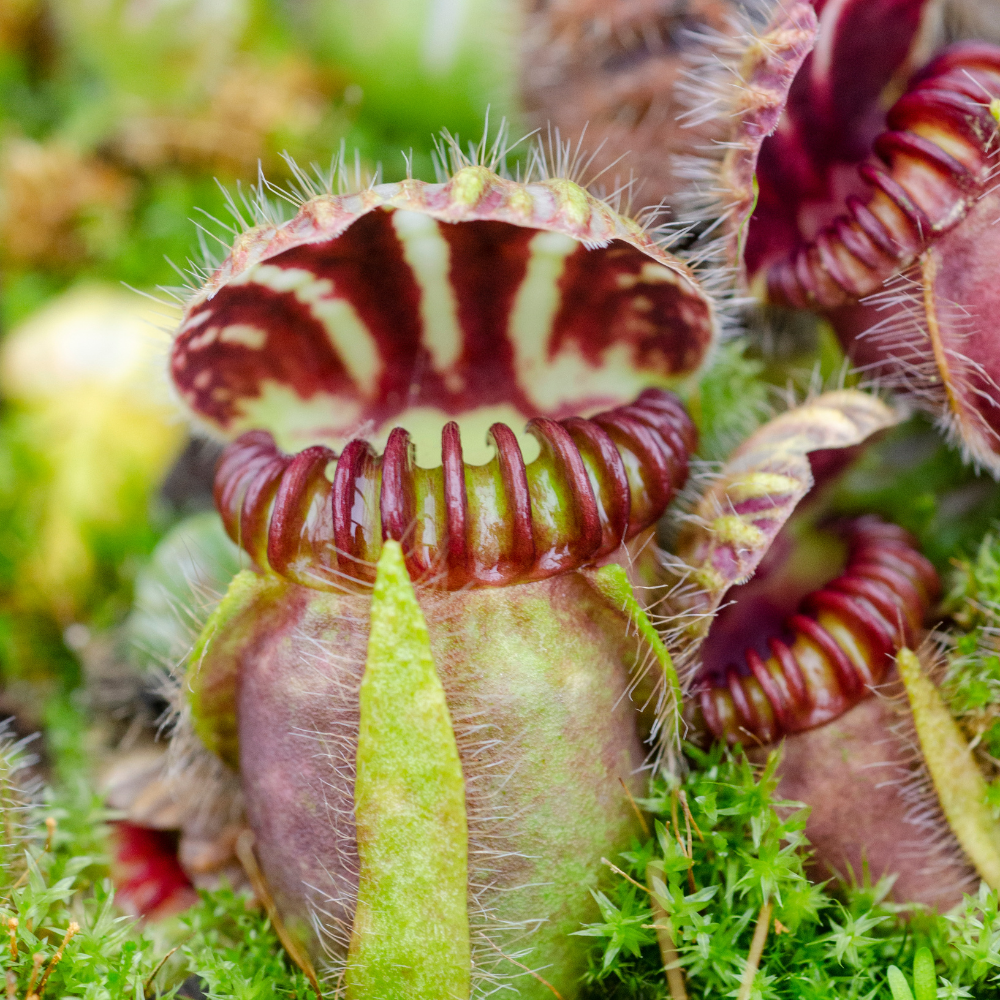
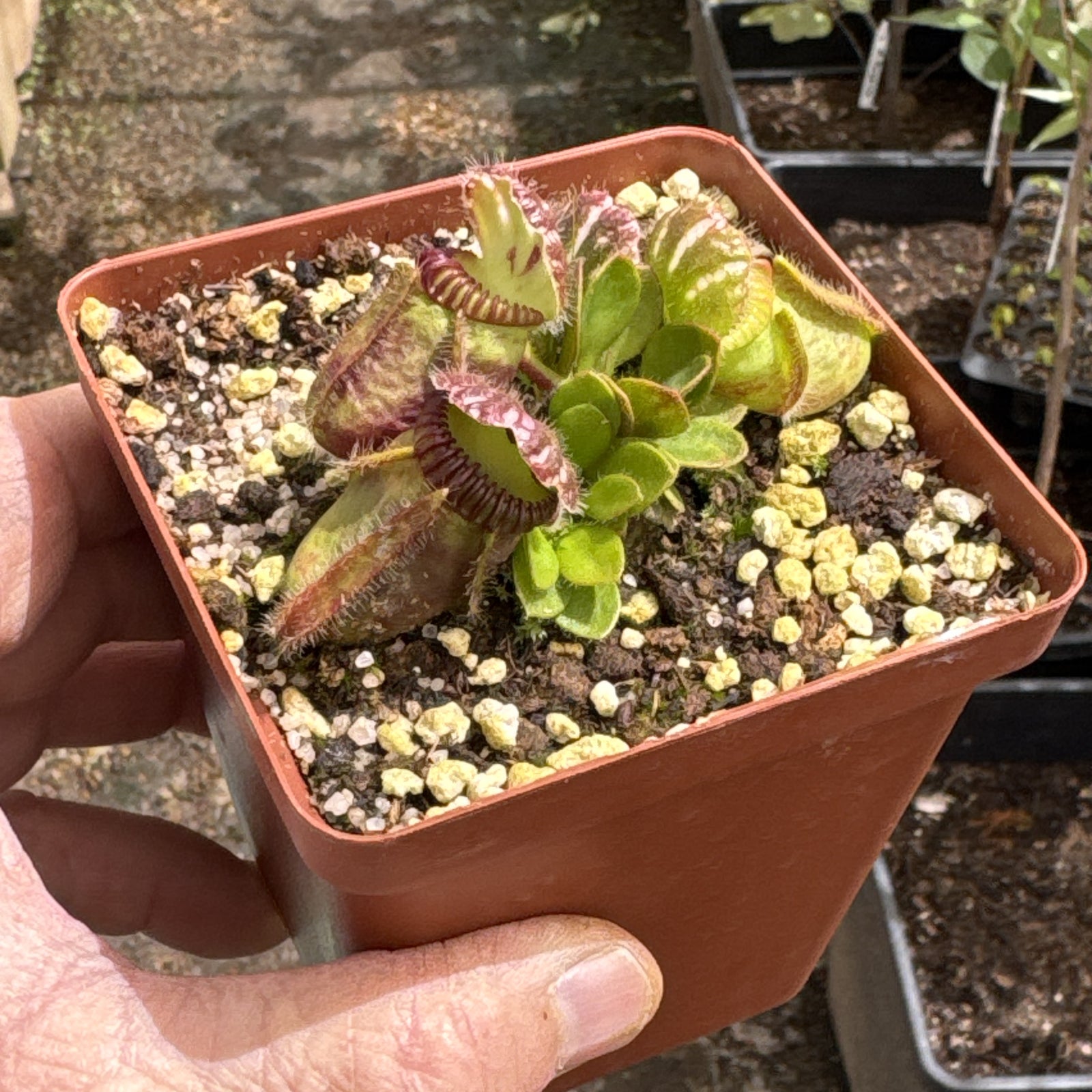
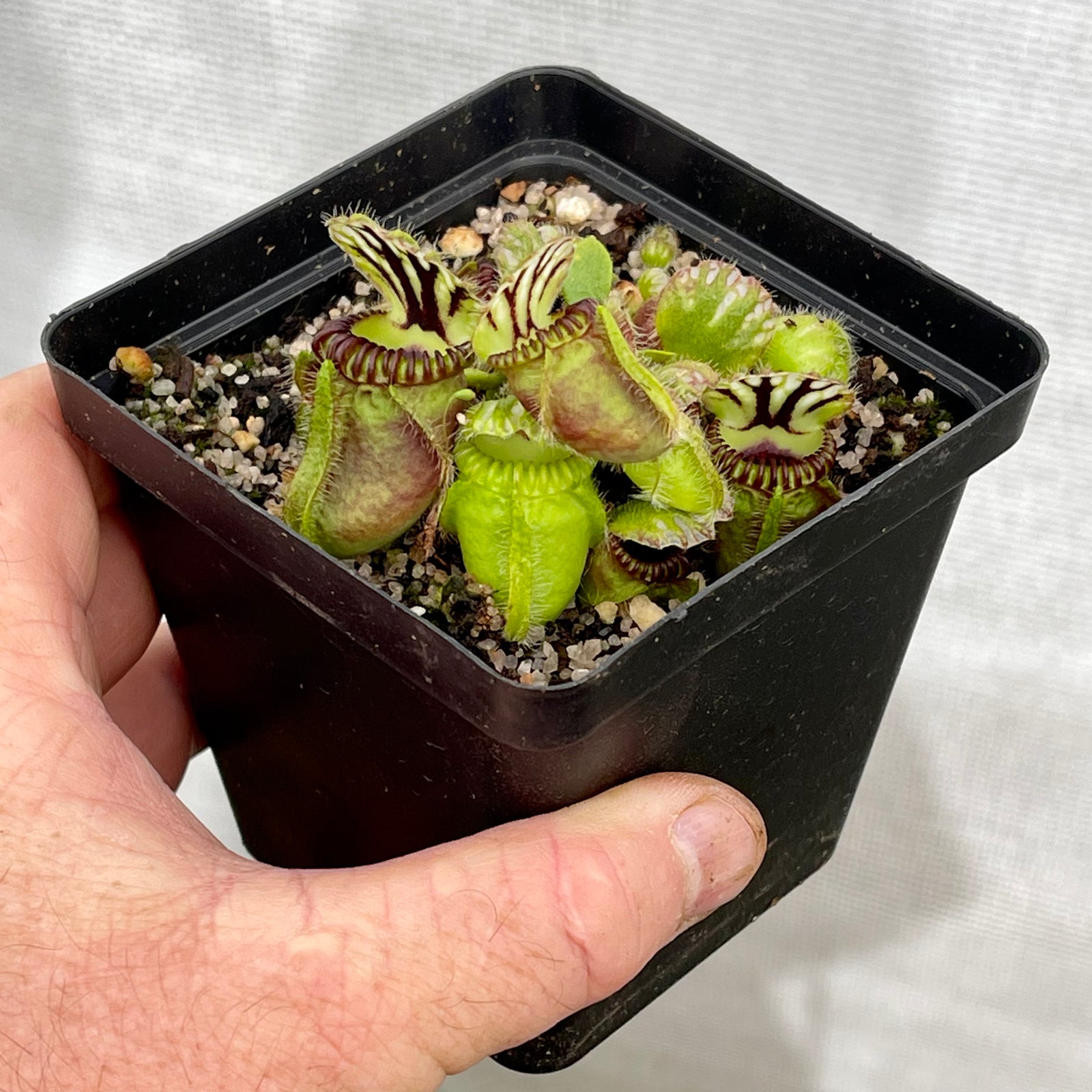
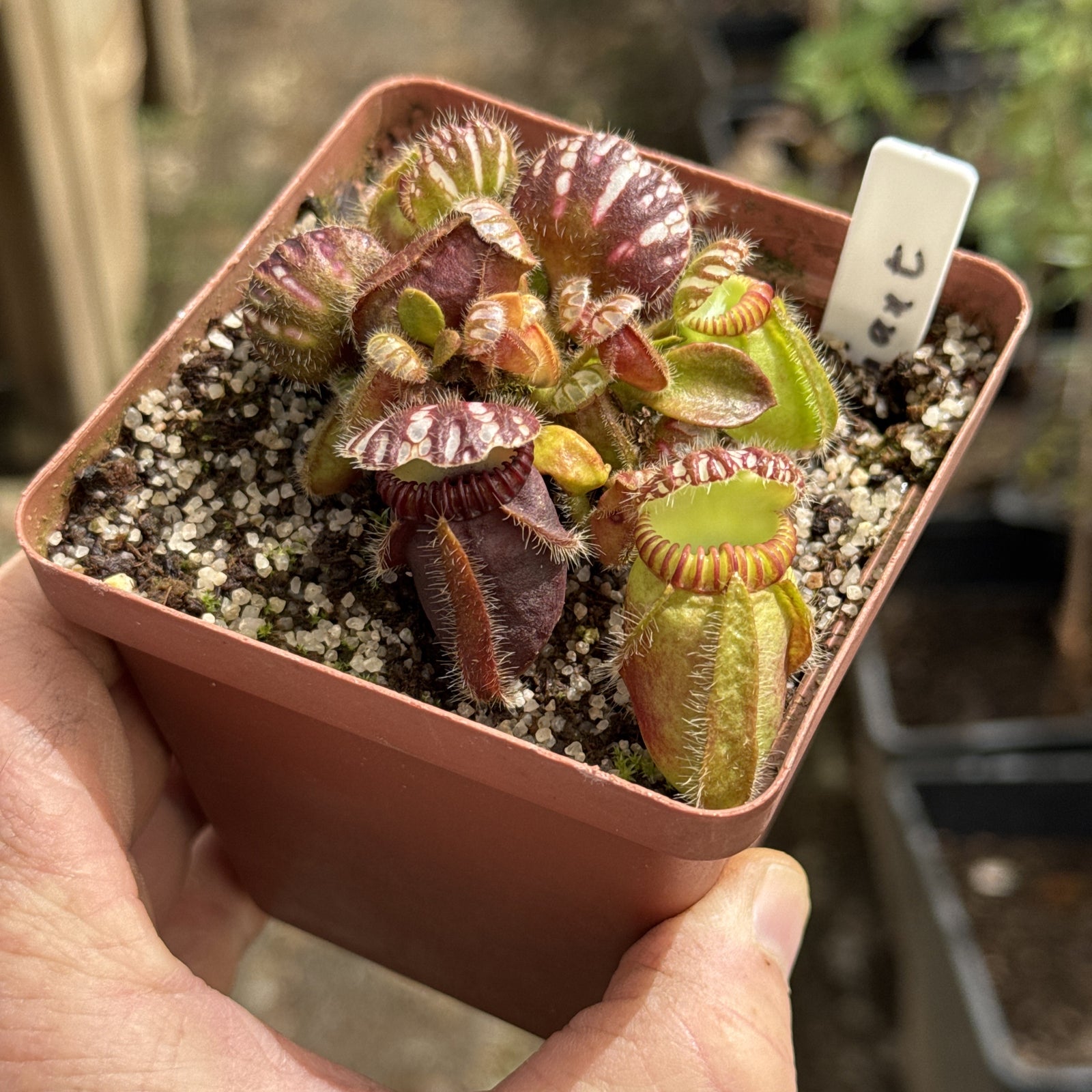
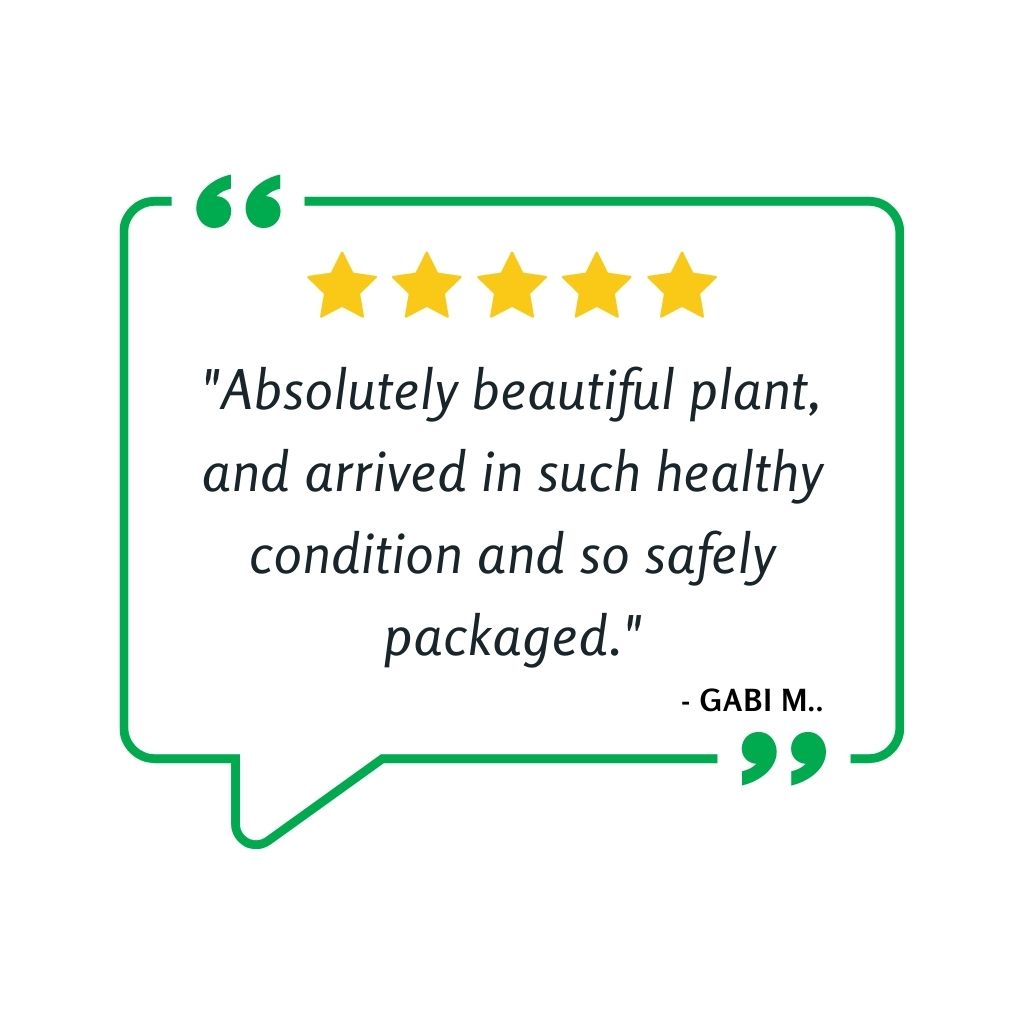
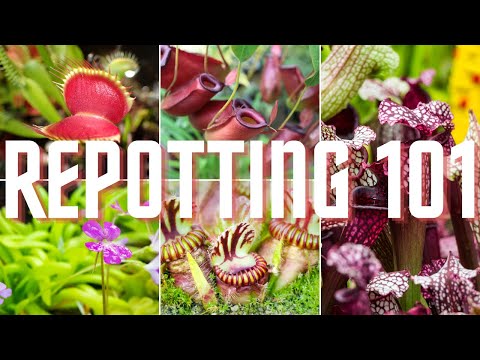
Butterworts (Pinguicula)
-
- Outdoors: Thrives outdoors in dappled sun during warmer months. A windowsill in winter is recommended.
- Bog Gardens: Good candidates in locations where it is not too cold. In hot summer months shade from other plants such as Sarracenia will be appreciated.
- Windowsills: Ideal plants for a partly sunny windowsill.
- Terrariums: Will thrive at room temperatures under suitable lighting.
-
Its important to mention that these plants have very short roots so the depth of a pot is not important.
Plastic pots or glazed ceramic containers are most suited, with drainage holes. Lava stones and abalone shells also make great, unusual containers for these plants.
-
The soil should be kept permanently damp but be careful of keeping them too wet during winter dormancy.
The most common watering method is by tray where the potted plant is placed in a couple cm of water and water is soaked up by the media. You can however also water plants using an overhead method during summer and autumn. In winter avoid overhead watering and also keep the soil on the drier side.
If your municipal water has a TDS count of less than 160ppm and a pH of less than 8.0 it is safe to use. Rainwater is usually recommended but does depend on the roof type (ideally not metal) and has not been recently treated chemically or painted. Alternately you can use bottled water (not spring or sparkling) or reverse-osmosis water.
Boiling water or allowing it to stand for several days makes no difference to the minerals in the water.
-
The Mexican species of Butterworts which we sell do not go completely dormant during winter but growth does slow.
-
Butterworts when grown outdoors will capture small flying insects and ants on their leaves.
If you are growing your plants in a location where insects are few then you can feed your plants with fruit flies, ants or bits of dried insects placed on their leaves.
-
This can be a little tricky with these plants and should only be applied to the leaves, avoiding the flowers and soil. You can fertilize with an organic foliar fertilizer or an orchid fertilizer.
-
This is perfectly normal. Older leaves will turn brown but usually simply "dissolve." If however you wish they can be trimmed away.
-
The most common pests are slugs and snails. Usually they will stop eating the plants after a leaf or two but if not you can use a good snail bait.
Treat with a pesticide and fungicide monthly, alternating between a few products to avoid resistance buildup.

Sundews (Drosera)
-
Sundews thrive in wet, humid conditions. Keep the soil consistently moist, but avoid waterlogging. Use distilled water, rainwater, or reverse osmosis water to prevent mineral buildup. Water from the bottom by placing the pot in a tray of water or by carefully watering the soil surface.
-
Yes, sundews require bright, direct sunlight to grow well. Place your plant in a location where it can receive at least 4 to 6 hours of direct sunlight each day. If growing indoors, consider using artificial grow lights if natural sunlight is insufficient.
-
While sundews can catch their own prey, you can supplement their diet with small insects if needed. Allow the plant to capture its own insects as well. Use small insects like fruit flies, gnats, or mosquitoes, and avoid large insects or meat.
-
Sundews thrive in a mix of sphagnum peat moss and perlite, similar to the soil mix used for Venus fly traps. This mix ensures proper drainage and acidity. Avoid soil mixes with added fertilizers. You can order soil for sundews here.
-
Healthy sundews have vibrant, dew-covered leaves. The dew is actually a sticky substance that attracts and captures insects. Watch for new leaf growth and check for any signs of discoloration, rot, or pests.
-
Yes, many sundew species can be grown indoors, especially if you can provide the right conditions. A sunny windowsill or using artificial grow lights can work well for indoor cultivation.
-
Some sundew species experience a winter dormancy period, during which they may stop producing new growth. During dormancy, reduce watering and provide cooler temperatures (around 50°F to 60°F or 10°C to 15°C).
-
The dew on sundew leaves is a glue-like substance used to trap insects. If the dewdrops are disappearing, it could indicate that the plant is not receiving enough light, the humidity is too low, or it has already caught and digested insects.
-
Fertilization is generally not necessary for sundews, as they obtain nutrients from captured insects. Fertilizers can potentially harm the plant or disrupt its natural nutrient uptake mechanism.
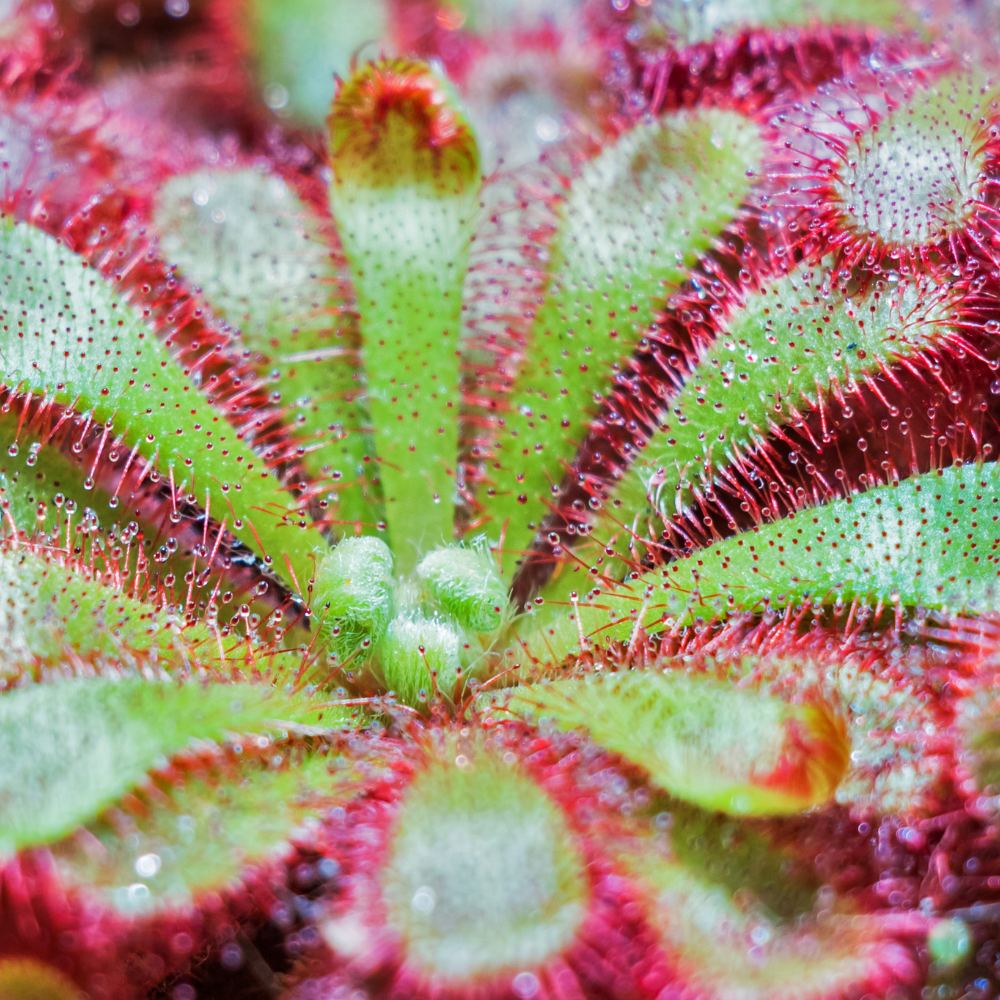
Tropical Pitcher Plant (Nepenthes)
-
Nepenthes prefer to be kept consistently moist, but not waterlogged. Use distilled water, rainwater, or reverse osmosis water to prevent mineral buildup. Water the soil when the top few centimeters feels dry, and make sure the pot has good drainage.
-
Nepenthes in high humidity and warmth but it very much depends on the plant. Species plants are rather particular and are divided into lowland, intermedia and highland plants, each with their own unique requirements. However, all the plants we sell are hybrids making them much more hardy and less specific about humidity and temperatures.
Provide them with bright, indirect sunlight. A humidity level of around 50-70% (unless you live in desert areas your ambient humidity will normally be around 50% anyways) is recommended, and temperatures between 70°F to 85°F (21°C to 29°C) are generally ideal.
-
While Nepenthes can catch their own prey, you can supplement their diet with small insects. However, avoid overfeeding, as too much food can lead to overly large pitchers that can stress the plant.
-
Nepenthes prefer a well-draining, acidic soil mix. A common mix includes sphagnum moss, perlite, and orchid bark. Avoid soil mixes with added fertilizers. Akadama, Kanuma, Lava stone and other such media is excellant for Nepenthes as they are acidic, contain no fertilizers and drain very well. You can order them here.
-
Healthy Nepenthes have colorful, well-formed pitchers and leaves. They produce new growth regularly during their growing period and exhibit signs of active trapping. Discoloration, wilting, or browning may indicate a problem.
-
Yes, Nepenthes can be grown indoors, but they require adequate light. Windows with bright, indirect sunlight is recommended. You might also consider using artificial grow lights to supplement light.
-
Many Nepenthes species don't experience a true dormancy period, but they slow down their growth during less favorable conditions such as in winter, unless you live in the tropics.
-
Pitchers might not form properly if the humidity is too low or if the plant is not receiving enough light. Inadequate watering or poor soil conditions can also affect pitcher health.
-
Yes, Nepenthes benefit from occasional fertilization, but use a diluted, low-nutrient fertilizer. Use a ratio of around 1/4 to 1/2 of the recommended strength, and avoid fertilizing directly into the pitchers. Seabrix is a highly recommended organic fertilizer. Order it here.
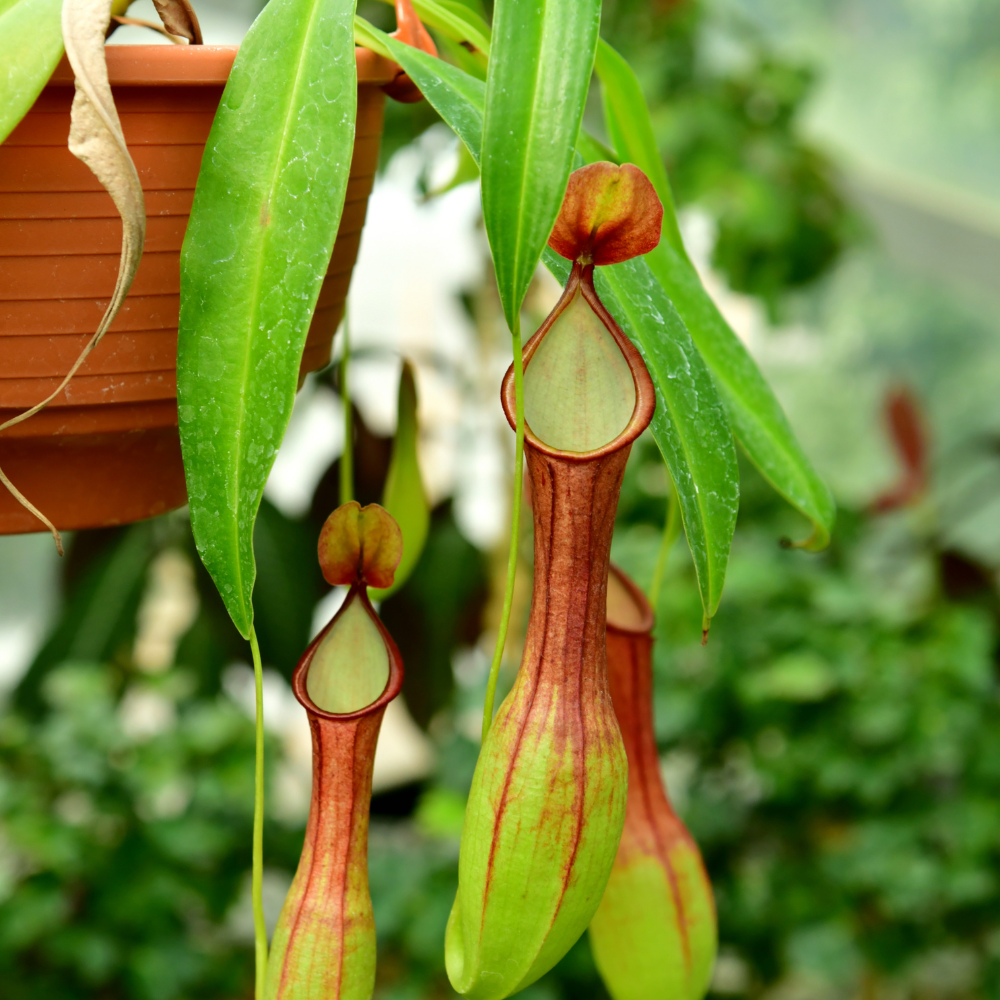
Venus Fly Traps (Dionaea)
-
Venus fly traps prefer to be kept constantly moist, but not immersed in water. Use distilled water, rainwater, or reverse osmosis water to prevent mineral buildup. The most common method of watering is the tray method eg. placing your potted plant into 1 - 2cm of water. Allow the tray to dry out for a day or so and then top up with water again. You can order trays here.
-
Yes, they require plenty of bright, direct sunlight to thrive. Place your plant in a spot where it can receive at least 4 to 6 hours of direct sunlight per day. A north-facing windowsill is usually ideal.
-
Yes, you can feed your Venus fly trap insects, but it's not strictly necessary. They can catch their own prey. If you choose to feed them, use small insects like fruit flies or small spiders. Avoid feeding them meat or large insects as they might have trouble digesting them.
-
A healthy Venus fly trap will have vibrant colored leaves. It will produce new leaves during its growing season and traps will close when triggered. Yellowing leaves (incorrect soil, too much sun), blackened traps (pending dormancy or too much sun too quickly from shade), or a stretched appearance (too little sun) indicate potential issues.
-
Use a mix of peat moss and perlite in a 2:1 ratio. The soil should be acidic and low in nutrients. Avoid regular potting soil or soil mixes with added fertilizers, as these can harm the plant. You can order the correct soil here.
-
Yes, you can grow Venus fly traps indoors, but make sure they receive adequate sunlight. A sunny windowsill or using artificial grow lights can be helpful to provide the necessary light.
-
Yes, they do. In the winter, Venus fly traps naturally go dormant, and their growth slows down. Novice growers believe the plant is dead as it essentially disappears below the soil. During this period, they require less light and should be kept at cooler temperatures (around 50°F to 60°F or 10°C to 15°C). Reduce watering during dormancy but keep the soil slightly moist. If using the tray method do not replenish the water in the tray until the soil has dried to where it is only slightly moist.
-
Blackened traps can be a sign of overfeeding, poor care, or stress. If many traps are turning black, check your watering and lighting conditions. Trim off blackened traps to encourage new growth. If you are entering your winter period then the plant is going dormant and the blackened traps are entirely normal.
-
Fertilizing Venus fly traps is generally not necessary. They derive nutrients from the insects they catch. Fertilizers can actually harm the plant by providing excessive nutrients that it cannot handle.

Featured collection
You will receive a care card with every order. This will cover basic care of these plants. For a detailed FAQ page on these plants read more here.


























